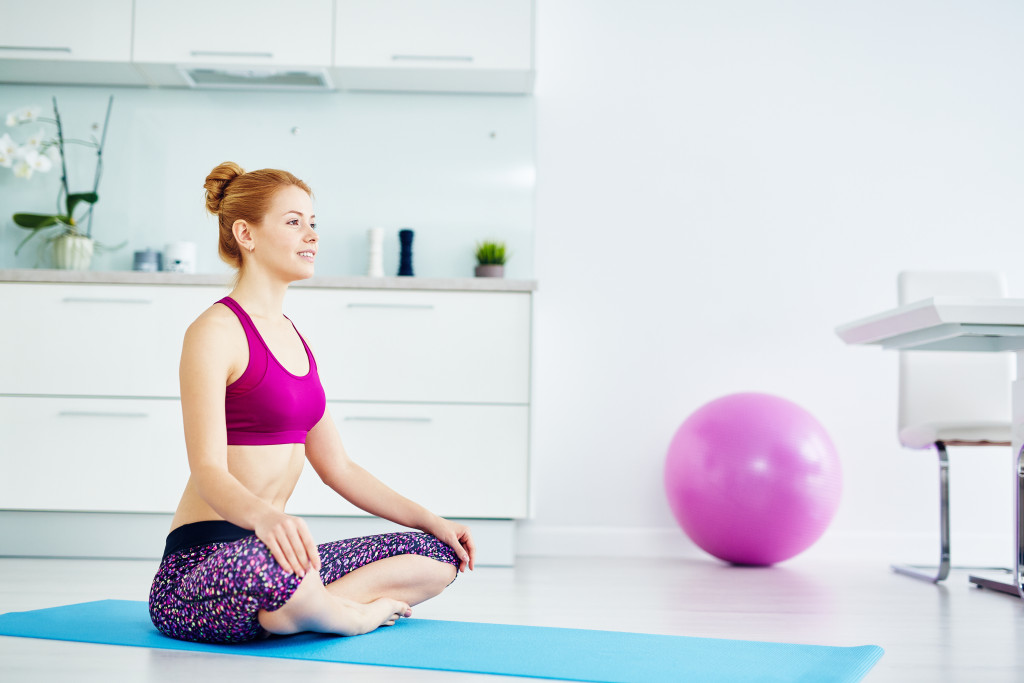Yoga is associated with a number of health benefits, including improved flexibility and reduced stress levels. But yoga isn’t always combined with other physical activities such as jogging or weight lifting to reduce the risk of injury. If you’re interested in starting a home yoga workout plan, there are some essential steps that you should consider.
The following steps will help you to start your yoga workout with the best chance of success and keep you motivated for years to come.
Prepare Your Room
Start with drawing in chalk an outline of where the furniture is located in your room, then move it around so that you’re practicing in the most open area. Then, place a yoga mat down on top of your carpeting or flooring. Also, you can purchase scented candles for home to transform your room into a meditation sanctuary.
Warm Up Right
Just like with any physical activity, warming up your body before starting yoga helps prepare it for the stress that’s about to come. Perform gentle stretching, then gradually work into a light jog, then a brisk walk. This will get your blood flowing and help you ease into the poses more easily.
If you’re not flexible at all, start with several stretches where you hold for about 20 seconds before releasing. If you are pretty flexible but want to improve, try holding yoga poses for about 30 seconds before releasing. If you already have a significant amount of flexibility in your legs and trunk, try holding in poses for more than 30 seconds and up to two minutes.
Don’t Force It
While it’s essential to commit yourself to yoga, forcing yourself to excess can be harmful at best and damaging at worst. If you’re not comfortable performing certain poses, don’t attempt them. If your muscles are too fatigued to hold up during certain poses, it’s best to take a break until you have sufficient energy. Gently stretch before continuing with the rest of the routine.
If you’re unsure of how to perform a pose, look for beginner instructions online beforehand and consult with an instructor if necessary. Also, avoid practicing after large meals or while stressed out.
Eat Right for Energy

While yoga can help relieve stress and improve your health by reducing anxiety, if you’re stressed about trying to squeeze in time to do yoga into an already hectic schedule, it can be hard to want to do yoga at all. To make the most of your time, make sure you’re getting plenty of sleep, eating balanced meals including fruits and veggies, and drinking plenty of water.
Commit to a Schedule
Whether you want to practice yoga for an hour or so every day, five days a week, or just do it sporadically when you feel like taking time out of your day for it, commit to practicing. Yoga is more than just exercise—it’s also an opportunity to spend some time calming your mind and easing your anxiety. The more often you follow through with your commitment, the better you’ll feel.
If you find it hard to commit to a yoga regimen, make small changes every day, like adding five minutes of stretching before each meal. If you do this every day for one month, you will be doing an hour’s worth of yoga by the end of it. Then, take another month, add in another five minutes, and work your way up to an hour a day.
Even if you don’t notice an immediate change, give yourself about three weeks to start seeing results. While some people experience relief of symptoms almost immediately after starting yoga, it typically takes time for the benefits to take effect fully.
Go for a Walk
The best way to make your practice stick is to make it a part of your everyday routine. Once you’ve established a regular yoga routine, do something else relaxing afterward, like going on a short walk or cuddling with your pet. If you’re already used to spending time meditating and can easily slip into a trance-like state, you might find that walking after your practice works just as well.
Final Thoughts
While yoga is about moving with the flow of life, that doesn’t mean you can let everything else get in your way of practicing regularly. Eat right, sleep well, and make sure to continue doing things you enjoy along the way.
Always consult your doctor before starting or stopping a new exercise routine to ensure it’s appropriate for your specific needs and doesn’t exacerbate any pre-existing conditions.


